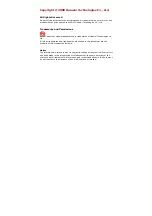
M7/M7L/M7LT Modular Satellite Modem
Maintenance
M7/M7L/M7LT - Rev. 0.05
4-3
4.3.
Internal Modem Test Functions
When a modem is first installed and placed in service it is common to run several tests to verify
proper performance of each of the equipment items in the link. The modem is designed to aid in this
process by providing built in test modes geared to verifying performance, and isolating potential
problems. These aids consist of multiple Loop-Back modes and the built-in Bit Error Rate Tester
(BERT). These facilities are also useful when troubleshooting system or link problems which involve
the modem.
CAUTION!: All of the modem testing functions described below will result in loss of traffic. They
should not be used in operating links without prior arrangements.
4.3.1.
Loopback Testing
The Loopback modes are typically used in a wired link with DTE equipment that can transmit and
verify receipt or preferably a Bit Error Rate Test Set (BERT). The basic procedure used is to transmit
a data signal at one end of the link and sequentially set each of the loop-back options. Proper
reception of the loop-back data verifies all components between the source and the loop.
The simplified diagram below shown in Figure 4-1 show the location of the modem
’s built in loopback
functions. The advantage to having these functions built-in is that they are electronically
programmable without having to disconnect existing cabling to connect equipment that must be
available for testing.
Each of these loopback modes are individually programmable at the modem front panel or remote
control interface. More detail on each of the typical loopback uses is given below.
DTE
or
BERT
Local Modem
Remote Modem
Satellite
Link
Far End Satellite
Data Loopback
Near End
IF Loopback
Internal
BERT
Near End Terrestrial
Data Loopback
Near End Satellite
Data Loopback
Figure 4-1
– Loopback Block Diagram
















































